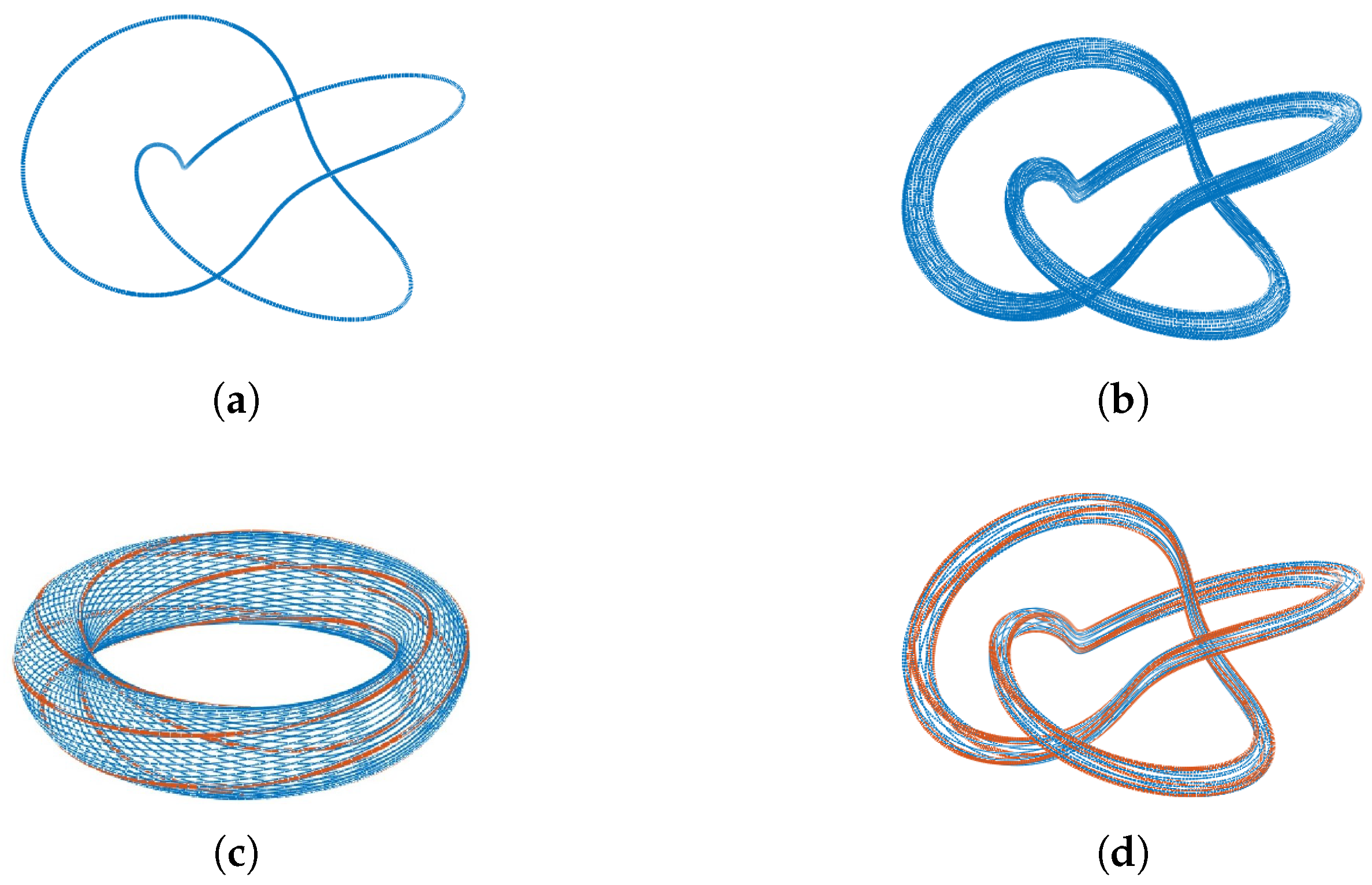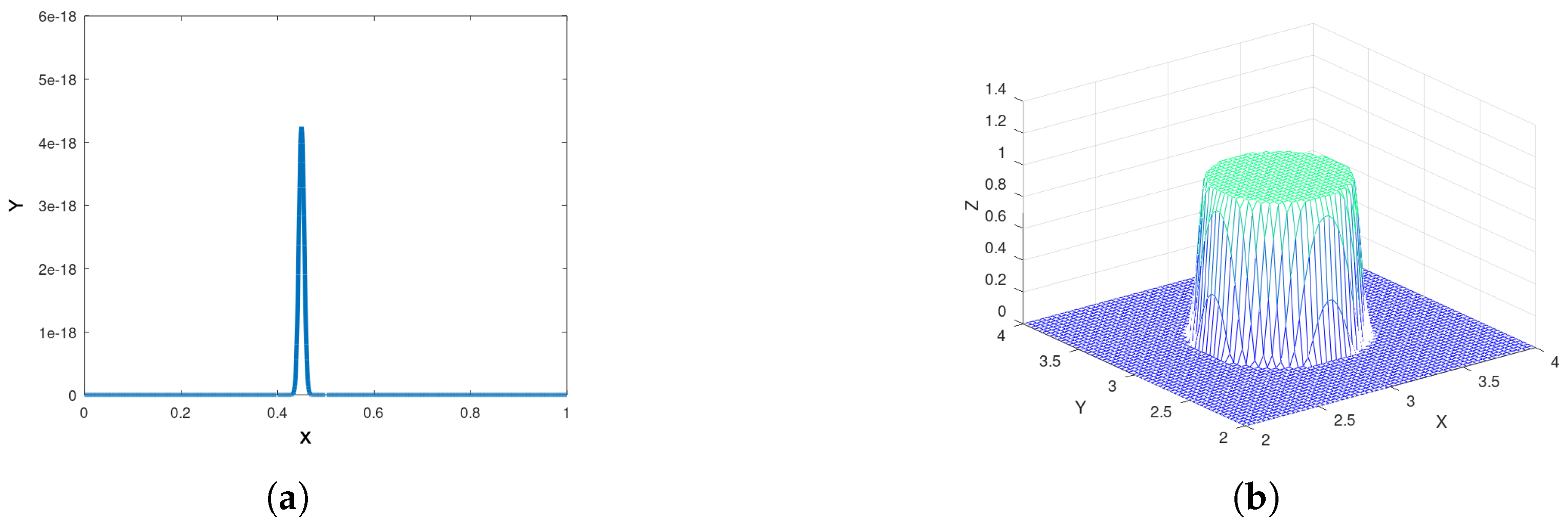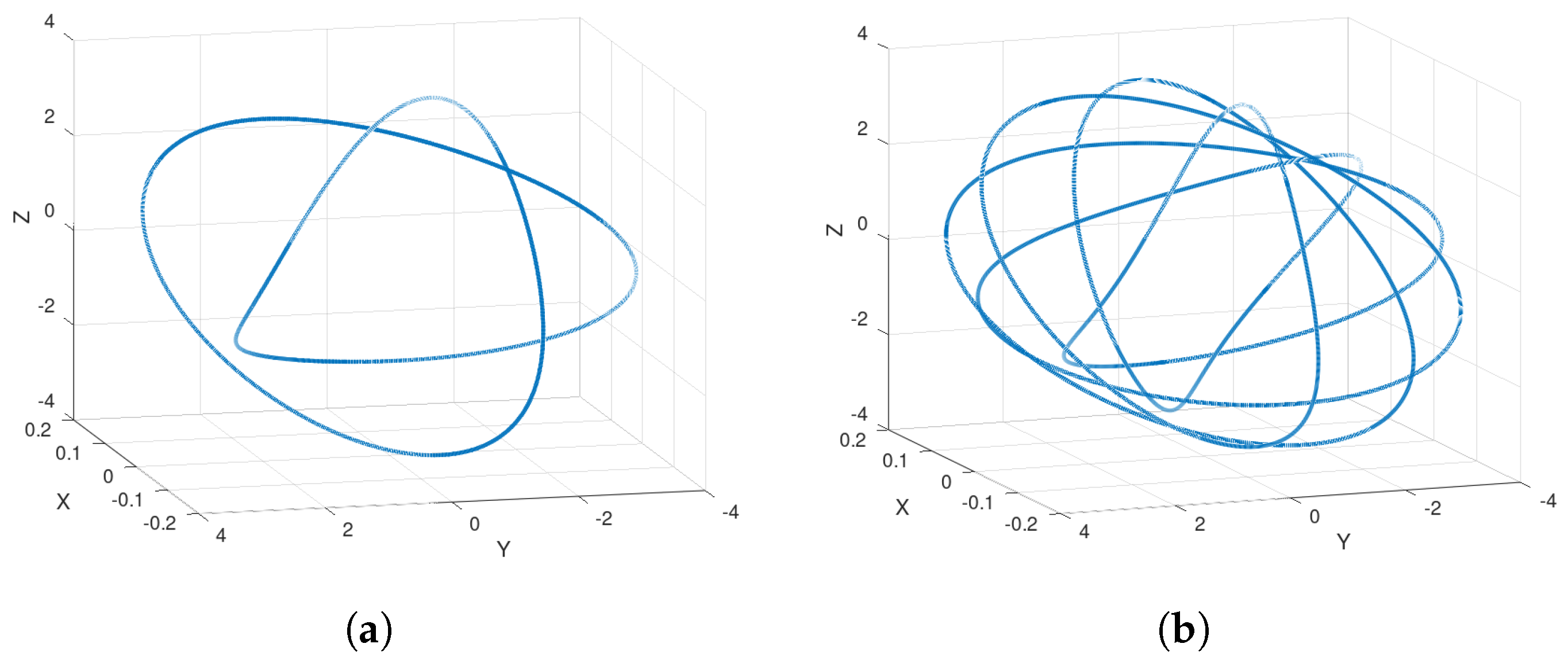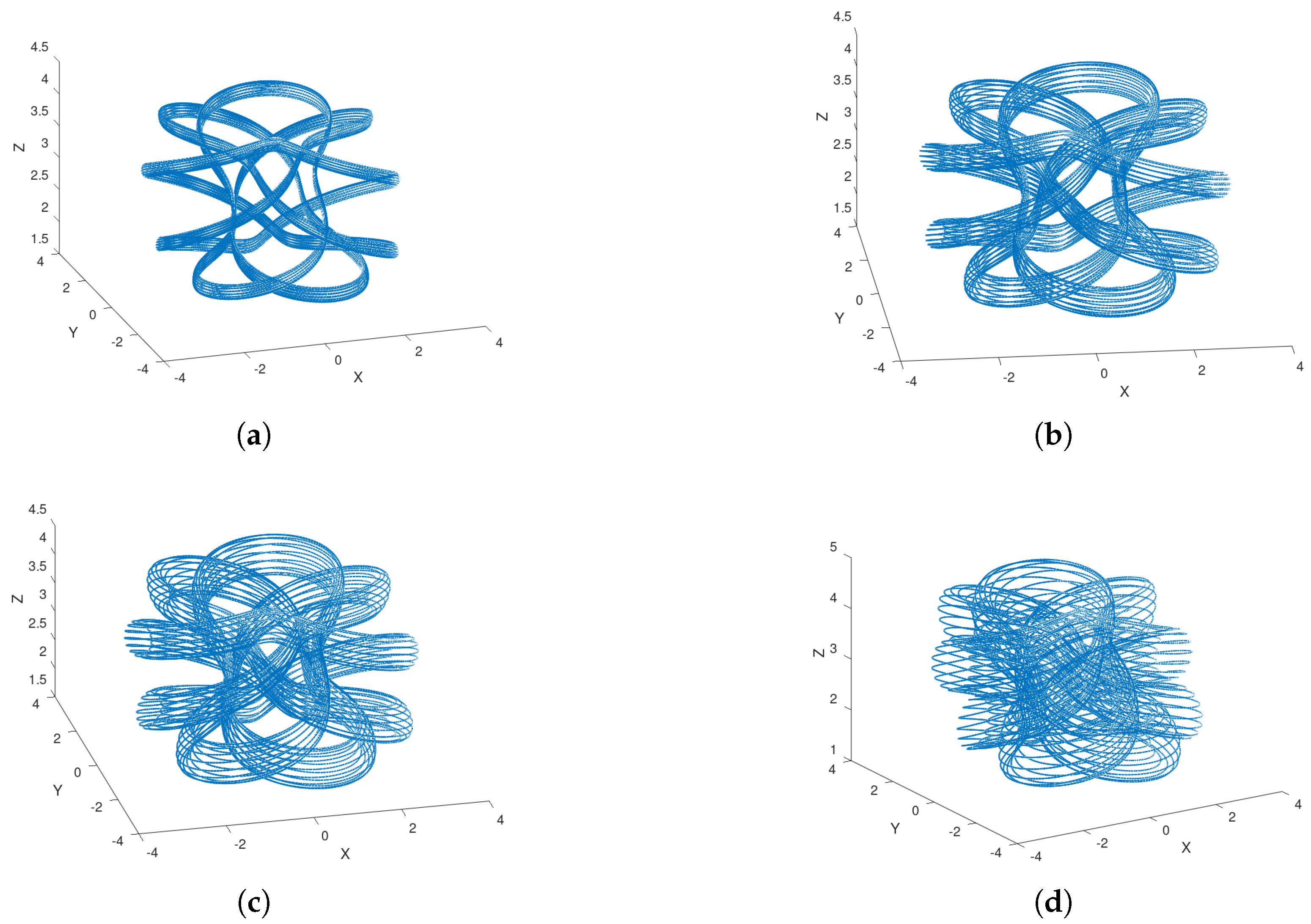A
-torus knot, also denoted
, where
are relatively prime integers, i.e.,
, is a simple closed curve on
that rotates
p times in the longitudinal direction and
q times in the transversal direction. In particular, the torus knot
, displayed in
Figure 2b, is called
trefoil knot. In
Figure 1b the torus knot
is shown. It is well known that knots
and
are equivalent, see for instance [
10]. Therefore, unless otherwise stated (see
Section 3.2), in the sequel we shall exclusively consider pairs of
admissible natural numbers p and
q, in the sense that
and
.
The functions
and
are given by
and
is the angle function, see
Figure 2a. In this case the torus knot obtained is
. It is worth noticing that each function
is a diffeomorphism between
and its image
.
Figure 2b,c depict examples of knots built using different pairs of admissible numbers.
Given any two knots, the so-called satellite knot construction is a procedure to create a third knot using the properties of given ones. Here we are interested in two particular cases of satellite knots, namely cable knots and iterated torus knots.
Definition 3. The-cable of a knot K , denoted , is the knot obtained by taking the knot on a K-tubular neighborhood boundary. When the -cable of K is called the iterated torus knot of type, which we will denote by .
2.2. A New Dynamical System Admitting All Torus Knots as Solutions
In this subsection we show how to obtain another dynamical system that contains all torus knots as solutions. Following the line of ideas in
Section 2.1, we start with the dynamical system (
5):
Although the method is valid for any
, for definiteness we select and fix a value
. Note that all solutions of system (
5) define circles around the point
with period
and, hence, it does not satisfy condition (
3), as it can be seen from the blue solution in
Figure 4a, which crosses the
-axis. Therefore, in order to fulfill this condition, the function
in (
6), similar to the tube function used in [
8], is composed over system (
5) to obtain the new system (
7), which will indeed satisfy condition (
3). The function
is defined as follows.
Given real numbers
,
and
satisfying
, let us define
with
Note that
is the distance between the point
and
. Also note that
g, whose graph is in
Figure 5a, is a bump function, such functions are known for having continuous derivatives of all orders. In (
6) we have that the denominator is a constant used to obtain
whenever
, this can be seen in the green part of
Figure 5b where the graph of
is shown. Since
g has continuous derivatives of all orders, by using the Fundamental theorem of calculus it can be proved that
is, at least, differentiable.
By setting from now on
,
and
, let us generate a new dynamical system by applying
to the system (
5):
Note that, given an initial condition within the circle
the solution consists of a circular trajectory around the center
, as illustrated in
Figure 4b. Moreover, if
then
and
, hence
will be a fixed point of system (
7), thus satisfying the necessary condition (
3).
Now, after applying the spinning method to (
7), the associated dynamical system reads:
It is to be noted that the function
defined in (
4) in this case is
and, because of the definition of
, we only need from
to be differentiable on
where
. System (
8) will also be referred as
.
On the one hand, note that when
, all the solutions of system (
8) with initial conditions within the circle
will generate the torus
, shown in
Figure 6a, with inner radius
and outer radius
. One easily shows that, for an initial condition
, one has
; therefore, given any smooth function
,
is a fixed point for system (
8). The same applies when the initial condition lies on the boundary
.
On the other hand, in the case of the constant function
and the initial condition
, the solution is the torus knot
, which is depicted in
Figure 6b. Note, however, that since
is a constant function, any initial condition within
will yield the torus knot
as a solution. This is due to the fact that the solutions of system (
7) are periodic and when the spinning velocity is
, or any other rational number
, the solutions of system (
8) are also periodic. In contrast, when
the resultant solution is not periodic, as it can be seen in
Figure 6c. Moreover, if
with
p and
q a pair of admissible numbers, we obtain the torus knot
as a solution for (
8). Therefore, in order to produce all torus knots
as solutions, instead of a constant function one uses a function
which includes the interval
in its range.
In order to define such a function
, given
, let
be the set
and let
be the torus generated by rotating
around the
-axis. Note that function
is constant along every
and also note that
Then the mapping
is defined by
Another way of defining
, when
, is:
Note that from (
9) it follows that function
constant along every
, while from (
10), it follows that
is continuous and differentiable in
Hence is also continuous and differentiable in .
From (
9) it follows that if
with
then
and the knot obtained as a solution is
. Since
then every torus knots will appear as a particular solution.
Theorem 1. Given the dynamical system (8), where is defined as in (10), it contains every torus knot as solution. Proof. Given the torus knot
we are going to show an explicit initial condition whose solution is such a knot. Define
. Hence, for
we have that the initial condition
. Then, by (
10), one has
The latter entails that the solution issued from the initial condition
is the torus knot
. □
Example 1. When one has , and the trajectory of the system (8) with initial condition is the trefoil knot , shown in Figure 7a. Similarly, when , we obtain the torus knot , shown in Figure 7b, for the initial condition . 
















